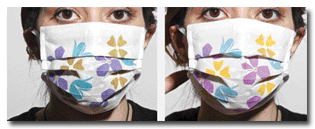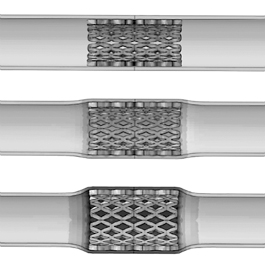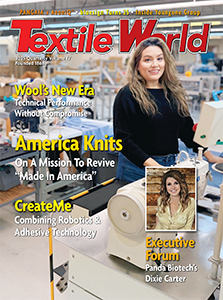Within any specific market, a number of trends and influencing factors are catalysts for changing
needs and higher performance requirements. The medical field is no exception to this rule, and
advancements in medical technology itself, the demographics associated with an aging population and
the onset of chronic disease states — like diabetes and obesity — play a huge part in the market
dynamics.
Technology advances are the area in which raw material suppliers have the greatest influence
and impact, specifically because material advances to support the shifting needs are most dominant
where there is investment in research and development. The success in delivering new, smarter
materials — along with necessary customization to meet an end application requirement, as well as
the scale-up to production via a fully commercialized manufacturing process — are all influenced
greatly by the customer’s need and acceptance of new products, including the willingness to pay for
the improved performance characteristics. The term “intelligent textiles” — interchangeable with
“smart” or “active” textiles — refers to textile materials or engineered structures that are
potentially able to sense, react and/or adapt to environmental conditions.

Marjan Kooroshnia, Ph.D., The Swedish School of Textiles, has printed surgical facemasks using
thermochromic inks that change color in response to a rise in temperature of the wearer’s
breath.
Recent impacts on raw material costs, along with manufacturing energy requirements and
transportation costs, have all influenced desired technology advances of late. For example,
alternative sources of raw materials are actively sought, as is the ability to reduce weight or
bulk, thereby minimizing transportation costs. The potential range of uses for medical textiles
continues to increase, nevertheless, and the need to understand and improve upon the performance of
these materials and to target specific applications becomes important. From the accreditation
process network to the creation of green and clean medical fabrics to the utilization of
nanofibers, the use of textiles in medical applications has become even more complex and
challenging. However, an underlying driving dynamic influencing how unmet needs are addressed in
the medical markets necessitates a linking together of principles from different disciplines.
Mobile Applications Raise Standards And Expectations
In the world of medical technology, instantaneous access to critical data enables lifesaving
decisions to be made sooner. Previously, a passive approach was acceptable, and clinicians and
healthcare workers were satisfied essentially to react to lagging external indicators. Now, with
many products being largely in contact directly with the surface of a patient through the skin, the
overarching movement is to position such products for more dynamic behavior. This raises concerns
as to how such materials can become more active, intelligent and dynamic components within a
surgical procedure; or can replace a routine examination for bedridden patients. In addition, such
features enhance the product’s value beyond its being simply a means to create a passive protective
barrier per se, or a disposable commodity-based product.
The maturity of the medical apparel market means that future growth is becoming progressively
more dependent on product innovation. The importance of new features, such as improved comfort and
conformance with high performance thresholds, provided at minimal cost, has never been more
essential. Several stages in smart textile development can be described; they include smart
textiles that have only a sensing function; smarter textiles that have both sensing and actuating
functions; and smartest textile systems that are able to respond and adapt their behavior to the
environment.
Table 1 highlights several areas of opportunity ranging from the current state of technology
to what could conceivably be available in five years or so. For example, Teresa Wagner, technical
leader – composite solutions, Owens Corning Science & Technology LLC, Granville, Ohio, recently
discussed the potential for carbon-enhanced reinforcements in engineered materials to provide an
effective means to create an electromagnetic shield and, in so doing, the ability therefore to
create thin, lightweight, highly conductive materials with complex geometries. So, in addition to
the current use of conductive materials in textile applications as antistatic materials, or for
heating, or for electromagnetic interference shielding as Wagner described, they will now have the
ability to transport electrical signals to or from sensors embedded therein, thus providing
additional capabilities for active intelligence and the ability to react to external stimuli in a
dynamic manner — for example, to changes in body vital statistics during surgeries.
Opportunities For Improved Products
There are numerous types of smart materials, some of which are already routinely available,
although still in development for many medical applications owing to the regulated and controlled
environment. For example, shape memory polymers (SMPs) have been used already for a variety of
biomedical applications and temperature-responsive polymers, including in implants such as
cardiovascular stents, thus allowing minimally invasive implantation through small incisions or
natural orifices while the stent is in its small temporary shape before it expands and reshapes
itself to fit the required clinical specifications and perform accordingly. In addition, such SMPs
have an additional feature — that of biodegradability, which results in the implant degrading
before elimination by the body after it has fulfilled its purpose.
Surgical sutures are another good example of SMPs that enable wound closure with self-adjusting
optimal tension. This characteristic reduces tissue damage due to the potential for over-tightened
sutures; and, furthermore, it supports improved healing and the regeneration of tissue.
There are many chromogenic systems available that rely typically on the inclusion of chromic
dyes, pigments or coatings. Halochromic systems, in which color change is brought about by pH
value, have been shown to provide valuable visible sensors for use with burn patients. The pH
values vary throughout the healing process; hence, wound healing can be monitored without the need
to disturb the dressing and, therefore, the wound bed itself. In addition, halochromic textiles can
be used in geotextiles or protective apparel to indicate environmental pH changes brought about by
contaminated atmospheres. Thermochromic textiles generally include embedded organic compounds that
operate between the ambient and body temperatures and characteristically react to heat. They are
used extensively for thermodiagnostics and as skin thermometers.
In addition, thermoelectric materials can be used to build devices that convert temperature
differences into electricity, and vice-versa.
Self-healing materials have the intrinsic ability to repair any damage due to normal usage,
thus expanding the material’s lifetime. Many orthopedic implants fail following accumulation of
micro-damage sustained over lifetimes of cyclic loading. The bone cement — consisting of a
poly(methyl methacrylate) (PMMA) base — used in these procedures has been a topic of an initial
study for self-healing materials and provides an example of how embedded microspheres embedded
within the PMMA can accomplish the repair. The microcapsules rupture and release their contents
into the areas where the micro-cracks form; polymerization of the released water-reactive healing
agent, a medical-grade cyanoacrylate tissue adhesive used in biosurgery, will serve to halt crack
propagation and restore the material’s strength. Barrier technologies for textiles and engineered
materials could incorporate similar embedded technologies to heal/repair breeches, tears or
scalpel/needle sticks.

This computer simulation shows how a stent made with a shape memory polymer expands into
place after insertion. The research was conducted at the Massachusetts Institute of Technology by
Lallit Anand, Ph.D., Warren and Towneley Rohsenow Professor of Mechanical Engineering; Vikas
Srivastava, Ph.D.; and graduate student Shawn Chester.
Path Forward: What’s Next?
During the past several years, medical device companies have been interested in assessing the
importance and impact of personal protective apparel. In broad terms, this article has focused on
the need for research and development in smart and active textiles to support the advancing
requirements of improved protective apparel. The primary targets for the advancements may be
surgical gowns and drapes as well as infection control apparel — products used widely in the
healthcare environment to protect healthcare workers, clinicians and patients alike from
transmitted infections. Yet, the smart and active concept can be leveraged to other markets such as
advanced wound care and other diagnostic systems, filtration and hygiene, fire and hazard
protection, and potentially also automotive and construction uses. This article has contrasted the
sophistication of materials in use to meet demands of performance and comfort with ideas for new
features that can be developed to influence future trends and address unmet market needs. Smart
textiles for healthcare and resulting medical applications are routinely the result of joint
developments made in many technologies — not least via advances in material science, information
technology and engineering; but also medicine itself.
Editor’s note: Vicki A. Barbur, Ph.D., works with leading-edge companies in their efforts to
spur, track and manage innovation through portfolio management and technology partnering. She is
based in Chicago.
November/December 2012




